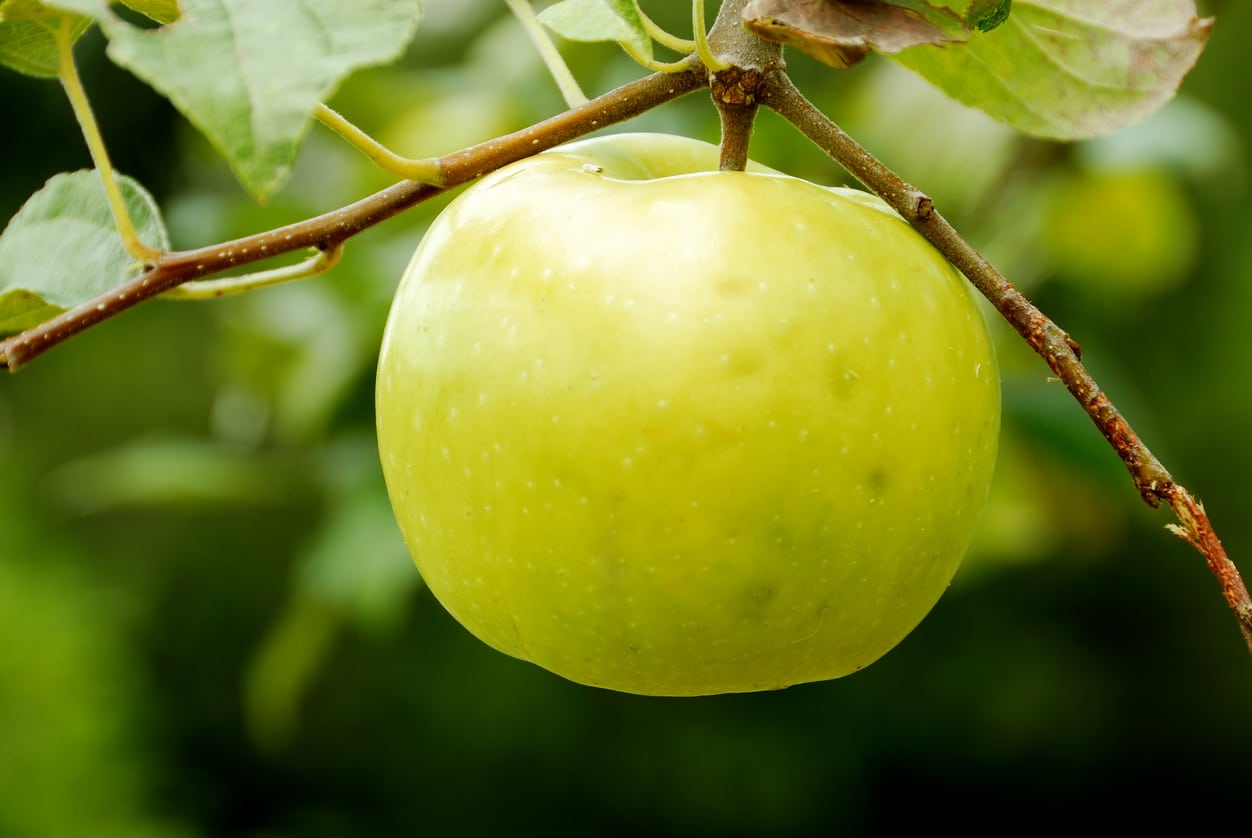Lodi Apple Care – How To Grow Lodi Apple Trees


Need an apple for your teacher? Try Lodi apples. These early fruits are cold hardy and powdery mildew resistant. According to Lodi apple information, the flavor is similar to Yellow Transparent but the apples are larger. In fact, Lodi is the progeny of Yellow Transparent and Montgomery. Try growing Lodi apple trees for a nicely sized, full flavored fruit that is right in your backyard. Some tips on how to grow Lodi apple trees will get you well on your way to enjoying these incredible fruits within a few years.
Lodi Apple Information
Unfortunately, Lodi apples don't keep long, so eat them when fresh and enjoy the season while it lasts. The soft, creamy flesh of Lodi apples lends itself well to pies and applesauce and can be sliced and frozen to extend the harvest. These early season fruits come from prolific plants and are hardy in United States Department of Agriculture zones 3 to 8. The fruits come from medium sized trees that usually grow 20 feet (6 m.) tall with a 25 foot (8 m.) spread. There is also a dwarf variety that gets only 15 feet (4.5 m.) in height. The tree originated in Trinidad, Washington, home to many of the best apple species. Time for harvesting Lodi apples is July, when the large, greenish yellow fruits are at their peak. The thin skin has few pores, which contributes to the tart-sweet flavor. The plants do need pollinating partners. Suggested varieties are Starkspur Ultramac, Red Jonathan, Cortland, and Stark Braestar.
How to Grow Lodi Apple Trees
A full sun location is required for growing Lodi apple trees. Well-draining, loamy soil is preferred with a pH of between 6.0 and 7.0. Seedlings are budded onto rootstock. The graft should be above the surface of the soil when planted. Plant when temperatures are cool but no sustained freezes are expected. Soak the roots in a bucket of water prior to planting and dig a hole twice as wide and deep as the root spread. Work out air pockets and water the tree in well. Young trees need some staking and shaping for the first few years. Water the tree regularly, especially for the first three years after installation.
Lodi Apple Care
You won't be harvesting Lodi apples for up to six years, but once they bear, the plants are prolific, although tend to bear heaviest on a biennial basis. During this time, Lodi apple care is important to secure a healthy tree with a good scaffold to hold all those heavy fruits. Early season apples need low nitrogen fertilizer. Begin fertilizing two years after planting. Lodi apples are extremely susceptible to cedar apple rust and should have fungicides applied in early spring. Many borers and larva can become pests. Use sticky traps and horticultural oil as well as good hygienic practices to prevent high infestations.
Gardening tips, videos, info and more delivered right to your inbox!
Sign up for the Gardening Know How newsletter today and receive a free copy of our e-book "How to Grow Delicious Tomatoes".

Bonnie Grant is a professional landscaper with a Certification in Urban Gardening. She has been gardening and writing for 15 years. A former professional chef, she has a passion for edible landscaping.
-
 Zinnias On Repeat: 10 Glorious Cut-And-Come-Again Varieties For Endless Summer Bouquets
Zinnias On Repeat: 10 Glorious Cut-And-Come-Again Varieties For Endless Summer BouquetsThese zinnia varieties keep giving all summer, making them the perfect choice for dedicated cutting gardens – or just the occasional homegrown bouquet.
By Ellen Wells
-
 Create A Romantic Garden Straight Out Of Bridgerton: Regency Era Romance In Your Garden
Create A Romantic Garden Straight Out Of Bridgerton: Regency Era Romance In Your GardenTry some romantic garden ideas straight out of Bridgerton. Flowers and gardens in the Regency era were lush and charming and you can get the same look!
By Bonnie L. Grant